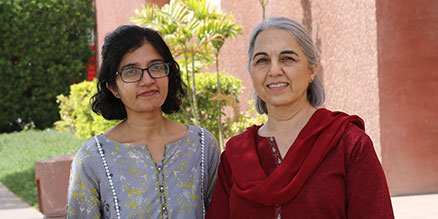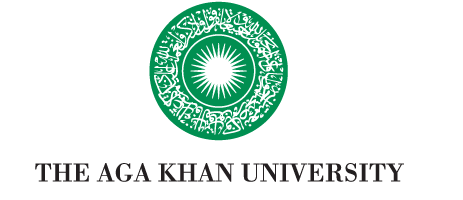A comprehensive analysis of sewage collected from 74 cities in 60 countries – including Pakistan, Kenya, Tanzania, and Uganda – has yielded the first comparable global database of antimicrobial resistant (AMR) bacteria that are present in mainly healthy people in these countries.
The researchers found that these countries fall within two groups: North America, Western Europe, Australia and New Zealand generally have the lowest AMR levels which is considered good; while Asia, Africa and South

The study was conducted by an international team of researchers, including Drs Rumina Hasan and Sadia Shakoor from AKU.
America have the highest levels.
Published in
Nature, the study was led by the National Food Institute at the Technical University of Denmark, and conducted by an international team of researchers, including Drs Rumina Hasan and Sadia Shakoor from the Department of Pathology and Laboratory Medicine at the Aga Khan University.
Using data from the World Bank, the researchers have also predicted AMR levels in 259 countries and drawn up a world map of resistance in healthy populations. According to their estimates, the Netherlands, New Zealand and Sweden have the lowest levels of resistance, whereas Tanzania, Vietnam and Nigeria have the highest levels.
Other countries with highest predicted AMR levels include Kenya and Uganda in East Africa, and Pakistan, Afghanistan and Bangladesh in South Asia.
The researchers’ work shows that most of the variables, which are associated with the occurrence of AMR, are related to sanitation conditions in a country and its population’s general state of health.
“Findings of this study suggest that improving sanitation, health and education as part of the Sustainable Development Goals would be effective strategies for limiting the global burden of AMR,” said Dr Hasan.
“The rise of AMR is threatening our ability to treat common infectious diseases, resulting in people suffering from prolonged illnesses, disability and even death. We need to take immediate actions to manage it. Governments, policy makers and other stakeholders have to come forward with country-specific AMR plans. Those who have already developed them on paper need to put them into practice,” she said.
Dr Hasan, Dr Shakoor and their team had identified
Pakistan's first outbreak of extensively-drug resistant typhoid in 2016 and led the efforts to manage it along with government and other stakeholders.
“Now we know that poor quality drinking water and an inadequate sewage infrastructure contributed to the spread of a drug-resistant strain of typhoid fever in Pakistan. A functioning infrastructure and investment in civic facilities is essential to prevent such outbreaks in future,” said Dr Shakoor.
Considering the gravity of the situation, the team has decided to focus on AMR at AKU’s annual Health Sciences Research Symposium in November this year.
Reusable data:
Contrary to data from traditional methods of analysis, raw data from metagenomics studies – or studies of genetic material recovered directly from environmental samples – can be reused to examine other problems. For example, the researchers from the sewage project are using data from the study to analyse the occurrence of other disease-causing microorganisms in the sewage.
As more resistance genes emerge in the future, researchers will also be able to reanalyse publicly available raw data from metagenomics studies to quickly uncover how these genes have emerged and spread.
A step closer to a global surveillance system:
The researchers will use the experience gained from the project to fulfill their overall ambition of developing a worldwide surveillance system that can continuously monitor the occurrence and spread of disease-causing microorganisms and antimicrobial resistance.

